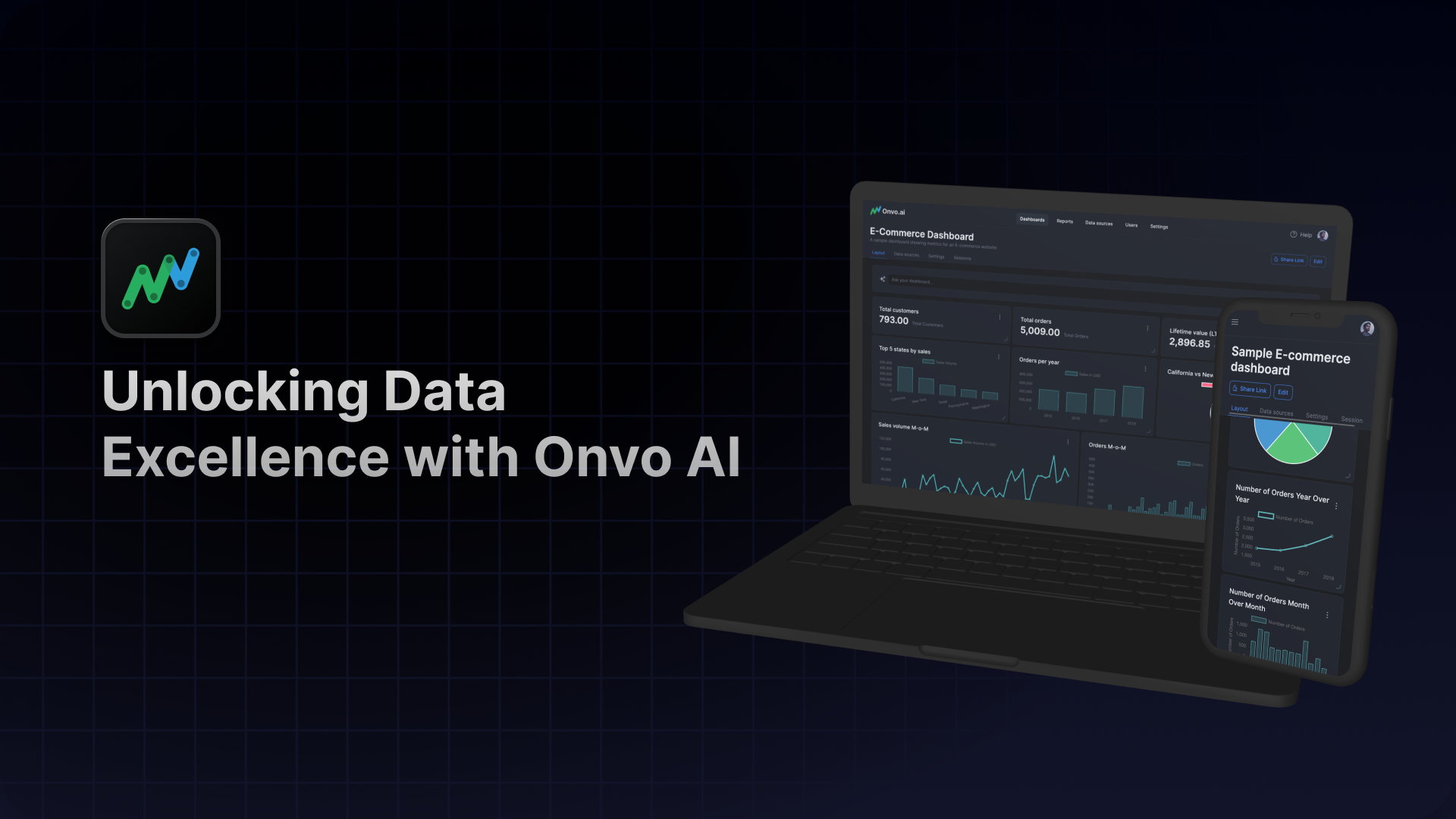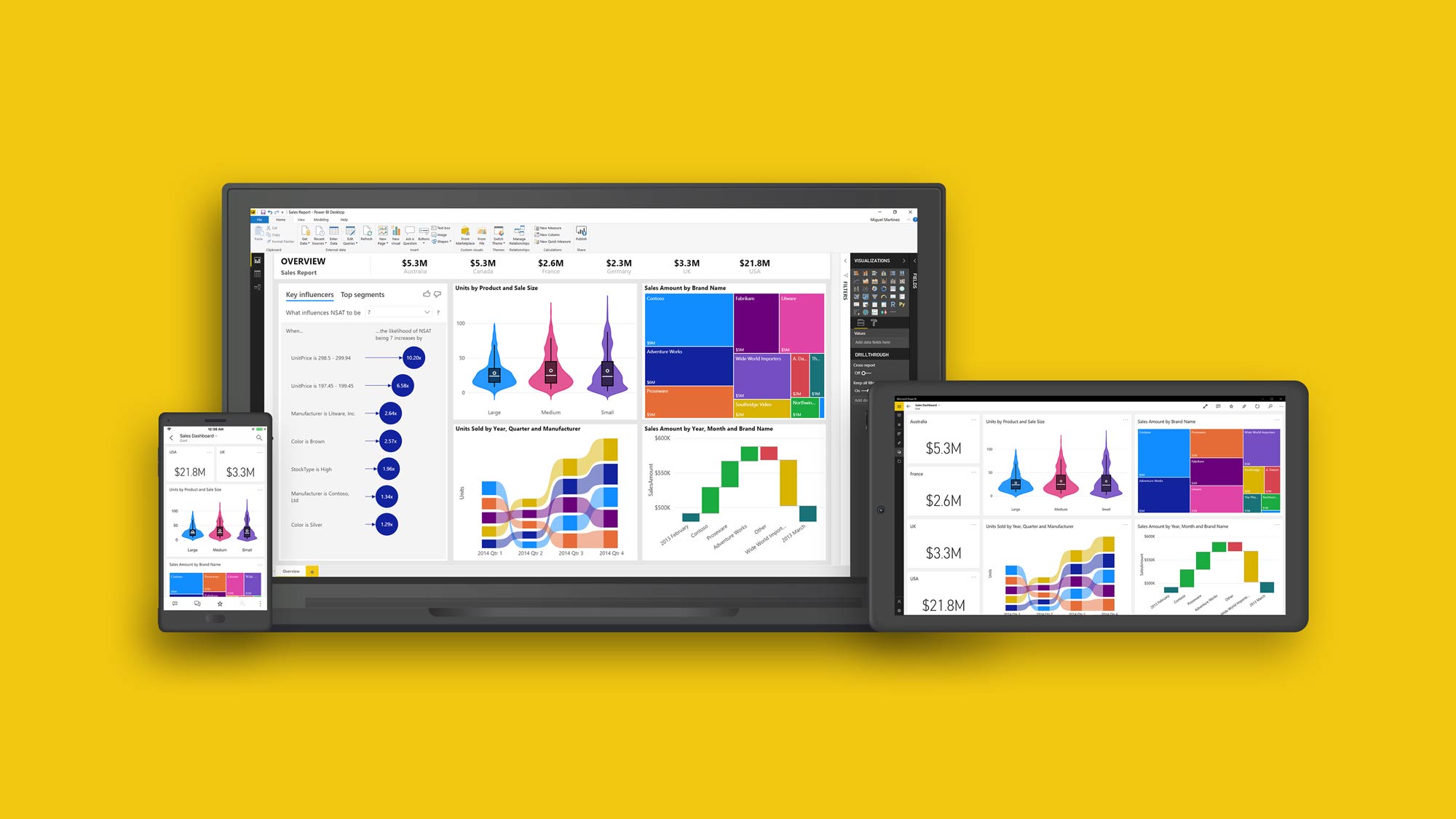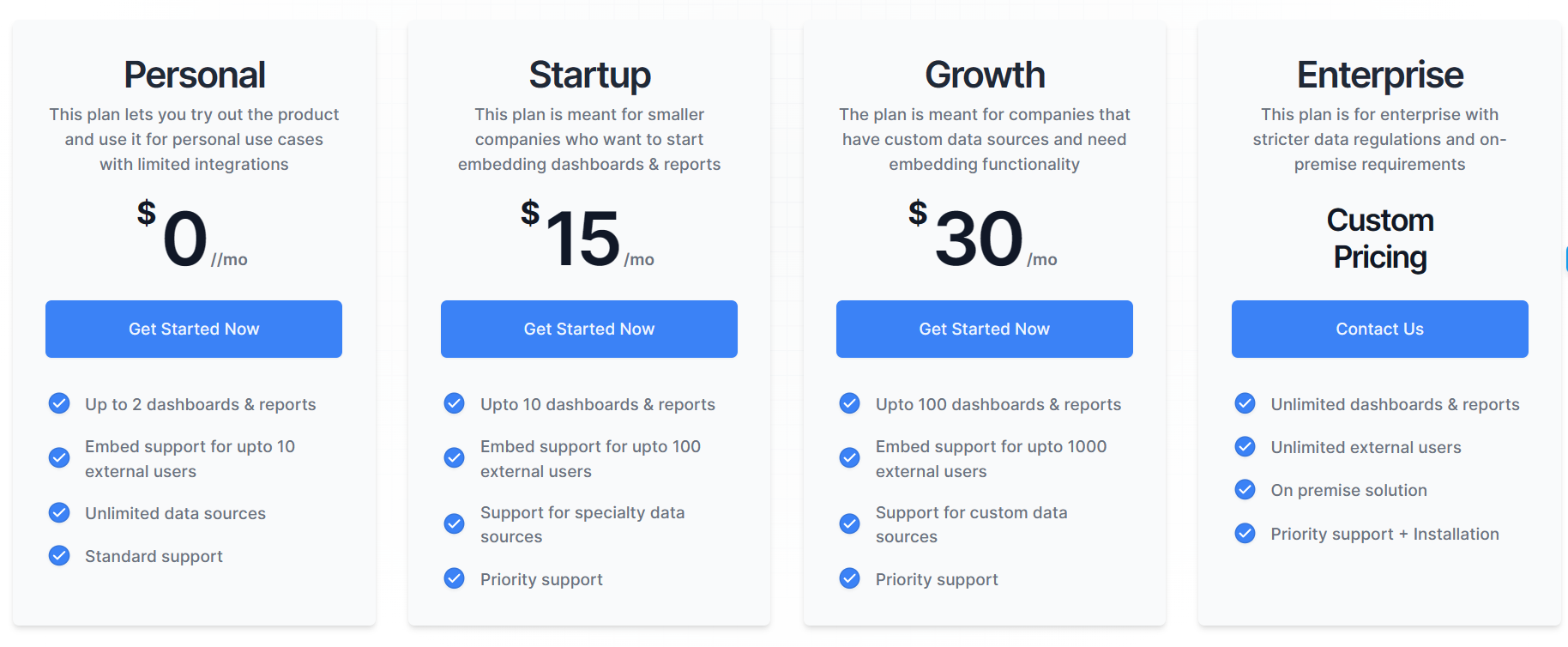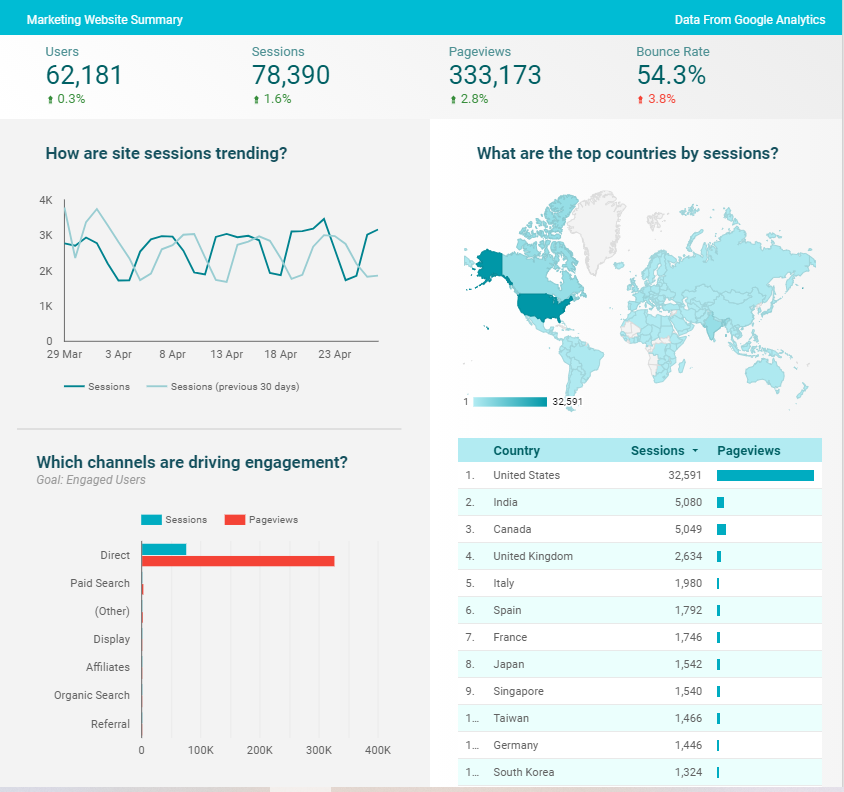Elevate Your Data Game: Discover the BI Alternatives to Non-Tech Teams

To unlock the full potential of your company's data, teams must have swift and effortless access to analyze it for valuable insights. However, internal data requests often consume your analysts' and engineers' valuable time, leading to bottlenecks. Consequently, this can impede your team's capacity to perform their tasks effectively, anticipate trends, and respond to evolving circumstances.
Microsoft's Power BI serves as the favored business intelligence platform for many organizations, enabling teams to independently extract data insights. Introduced in 2011 under the codename Project Crescent, Power BI swiftly gained popularity, earning the trust of numerous companies, both large and small. Its integration into Microsoft Office 365 in 2013 further solidified its position.
Nonetheless, Power BI may not suit every organization's needs. In this article, we have scrutinized Power BI's limitations and presented the best alternatives and replacements that excel in various aspects such as features, pricing, security, user-friendliness, and support.
8 Best Power BI alternatives for 2023
Here's our picks for the 7 best Power BI alternatives to empower your non-tech teams:
- Onvo.ai
- Embeddable
- Looker
- Ubiq
- Google Data Studio
- Metabase
- Apache Superset
- Other tools
Microsoft Power BI at a glance
Power BI is one of the leading business analytics platforms on the market. It is an on-premise business intelligence tool that enables self-service, enterprise-level analytics for data analysts and business users to ask ad hoc questions.
As a Microsoft product, Power BI uses the MS ecosystem, including Azure and Office 365, and a proprietary formula and query language called DAX. It comes in six packages: Desktop, Pro, Premium, Mobile, Embedded, and Report Server.
Power BI features:
- Self-service Power Query processes, transforms, integrates and enriches data for analysis.
- Natural language query tool enables questions in conversational language.
- Intuitive drag-and-drop interface and hundreds of data visualisations to build customisable, interactive reports and dashboards.
- Built-in connectors and APIs to on-premises and cloud data sources like spreadsheets, Salesforce and Google Analytics.
- Integrates with Office 365 and other business tools for cross-organisation sharing and collaboration.
- Embed reports and analytics in your blog or website.
- Power Apps and Power Automate enable workflow automation.
- Build machine learning models to get insights from structured and unstructured data, including text and images.
- End-to-end encryption, real-time access monitoring and configuration of roles and access permissions.
- Pro users can submit a ticket for free support.

Power BI limitations:
- Steep learning curve: engineers must learn DAX to provide setup and support for non-techs.
- With so many different products, it’s hard to know where to start and what to focus on.
- Designed for MS, so not Mac-friendly.
- Can be slow to handle large data sources.
- Unless recipients also have Pro, you need a Premium license to share outside your organisation.
Power BI pricing:
- Desktop is free for individual users.
- To collaborate and share, upgrade to Pro at $9.99 per user/month. Free 60-day trial.
- Premium costs $20 per user/month. Free 60-day trial.
- License your whole organisation from $4,995 per month.

Best for:
- Competitively priced compared to other top-right quadrant providers like Tableau, so a good option for small companies and SMEs with a data team that can set it up.
- Widely used by software and ICT companies.
- Companies using the MS ecosystem.
RELATED POST: 6 Tableau Alternatives to Help You Visualise and Analyse Your Data
8 Power BI alternatives and competitors
These Power BI alternatives also enable self-service data exploration, with varying degrees of user-friendliness and versatility. Many also compare well on price, support and security.
1. Onvo.ai
The best data platform to empower your whole team.
Are you tired of grappling with endless customization requests and sifting through complex SQL queries to visualize your business data? Say hello to Onvo, your AI-powered solution for crafting stunning dashboards and unleashing the true potential of your data.
Onvo features:
- Easy Integration: Seamlessly integrate using our dev-friendly SDKs or alternatively develop directly on our platform.
- Data privacy: Crafted with a strong focus on data privacy, our tools are built to keep your data on your systems.
- Multiple data sources: Effortlessly link numerous data-sources, like SQL or NoSQL databases, and even custom API endpoints.
- Powered by AI: Leveraging AI, you can now create custom dashboards and data visualizations effortlessly using a simple prompt.
Onvo pricing:
- Personal: Ideal for personal use cases, allowing you to try the product with limited integrations. $0/month
- Startup: Meant for smaller companies looking to embed dashboards and reports. $15/month
- Growth: Suited for companies with custom data sources requiring embedding functionality. $30/month
- Enterprise: Tailored for enterprises with strict data regulations and on-premises requirements. Contact Us

Best for:
- Effortless setup and a minimal learning curve, making it perfect for empowering non-tech users without the need for in-house support.
- Delving beyond conventional query builders and dashboards to unearth profound insights within your data.
- Suitable for companies of any size, including large enterprises, seeking seamless integration of AI-powered analytics.
Learn more about Onvo:

2. Embeddable
The best platform for embedded analytics
Embeddable is not a classic BI tool for internal use, but rather a toolkit for crafting remarkable user-facing-analytics experiences into your app own app. It comprises a front-end SDK, a back-end engine, and a no-code builder so you can launch your perfect solution in just 10% of the time.
Embeddable features:
- Ultimate flexibility for designers and engineers - get all the flexibility of building it yourself with all the speed and convenience of a 3rd party solution. Designers can design components in exactly the same way they usually would, using their existing design-system, styling, and branding.
- A world-class no-code builder.
- Easily build interactivity into your analytics experience.
- Self-host vs use Embeddable's cloud service.
- Row-level security as standard.
- Multiple levels of caching, so data loads instantly.
- Semantic layer built in.

Embeddable pricing:
Embeddable is currently accepting companies onto its closed-beta. Find out more here.
Best for:
- Companies looking to embed analytics within their apps.
- Suitable for any size company, including large enterprises.
- Favoured by design and product teams.
3. Looker
The best for companies with a data team and a significant budget.
Cloud-based Looker, owned by Google, is one of the leading Power BI competitors. It uses a proprietary SQL-based data modelling language called LookML. Following setup by the data team, business users can ask ad hoc queries and drill down with numerous filters.
Looker features:
- Real-time reports and customisable, interactive drag-and-drop dashboards.
- APIs for integration with custom or third-party applications.
- Schedule and share insights and updates internally and externally via email, links, Segment, Slack and more.
- Embed dashboards and explorable analytics in third-party websites, portals and applications.
- Integrates with a range of third-party apps to automate workflows.
- Connects to multiple cloud or on-premises databases.
- Single, secure database connection. Results are cached, with no long-term storage.
- Well-rated customer support via the platform for developers and admins.

Looker Pricing:
- Customised by number of users and deployment, so rates vary widely. Online sources suggest $3,000-$5,000 per month for 10 users (annual subscription).
Best for:
- Enterprise-wide deployment in companies with a data team that can leverage the full range of Looker’s functionality.
- Small companies and SMEs in varied industries, but particularly software companies.
Cons:
- Steep learning curve, complex setup and need for in-house support for business users. Data analysts must learn LookML.
- Can be slow to load and render certain queries.
- Comparatively expensive.
4. Ubiq
Ubiq is a cloud-based Power BI alternative that enables self-service data exploration without coding or SQL.
Ubiq features:
- Drag-and-drop interface and up to 24 visualisations for customisable charts and dashboards.
- Analyse data from multiple tables and drill down with dynamic filters to slice and dice data in real-time.
- Supports SQL for advanced analytics.
- Export and share via email as PDF, CSV or image. Schedule daily or weekly updates.
- Online access from PC, Mac, mobile devices and tablets. No setup required; just sign up and get started.
- Connects to MySQL, PostgreSQL, SQL Server databases, AWS, Azure and Redshift.
- Secure connection and read-only access. Data stays in your network and isn’t stored by Ubiq.
Ubiq pricing:
By number of users and dashboards. Starts at Individual ($29, one dashboard) through Very Large Team ($299, 20 users, 60 dashboards). Custom pricing is also available.
14-day free trial for all plans.

Best for:
- Startups and SMEs with small teams that want data visualisation without installing BI software.
Cons:
- Limited number of users and dashboards per plan, so less suitable for growing teams wanting to control costs.
- Training and customer support options are opaque, to say the least. Non-techs will need help to get up and running and make the most of it.
- Reports don’t auto-update so you need to refresh.
5. Google Data Studio
The best free tool for creating visualisations.
Data Studio is Google’s cloud-based alternative to Power BI. It’s part of the Google Marketing Platform and integrates with other GA360 tools.
Google Data Studio features:
- Ask ad hoc questions with the no-code, no-SQL Explorer.
- Create new dimensions and metrics with custom formulae. Combine functions to transform data into useful values.
- Intuitive, customisable report templates. Visualisations have comparison functions to track changes over time.
- Share reports via URL internally or externally and collaborate in real-time using Drive technology.
- Native connectors to Google Analytics, Ads, Google BigQuery, MySQL, PostgreSQL, YouTube and more. Hundreds of paid partner-developed connectors to other data sources like Facebook Ads.
- Support via the Help Centre or community.

Google Data Studio pricing:
Free for Google account holders.
Best for:
- Tracking and reporting on website traffic and Ads, social media and digital marketing campaigns.
- Small companies and SMEs using the Google ecosystem and lacking a big budget to invest in a BI platform.
Cons:
- Visualisations and complex analysis functions are limited compared to other BI tools.
- A bit of a learning curve, especially for advanced functionalities. Beginners may need in-house support.
- Doesn’t support Excel.
RELATED POST: Power BI vs. Google Data Studio vs. Trevor: Which Tool Suits Your Business Best?
6. Metabase
The best for basic no-code queries.
Metabase is one of many open-source Microsoft Power BI alternatives. It can be deployed on-premises or in the cloud for non-tech users to ask no-SQL queries.
Metabase features:
- Add filters, joins, aggregations and variables with SQL or the Notebook Editor.
- A range of visuals and helpful suggestions to build auto-refreshing dashboards.
- Schedule and share reports via URLs in email or Slack.
- Embed analytics in your apps with Enterprise Edition.
- Connects to a range of SQL and NoSQL databases.
- Priority support for Enterprise customers. Otherwise, 3-day-response email support for other Cloud packages or the community if self-hosting.

Metabase pricing:
- Self-hosted Open-Source is free, with 20+ databases, unlimited charts and dashboards but no automatic feature upgrades or backups.
- Cloud Starter costs $85 per month for 5 users ($5 per additional user). Free 14-day trial.
- Cloud Growth costs $749 a month for 10 users ( $15 per month per additional user). Free 14-day trial.
- Enterprise starts at $15 k/year (cloud or self-hosted). Free 30-day trial.

Best for:
- Advanced and semi-technical users capable of making use of the query builder options which require knowledge of SQL.
Cons:
- With an open-source platform you run on your own infrastructure, unless you pay for a pricey support contract, you’re on your own if things don’t work as expected.
- The query builder is basic compared to other tools like Power BI. There’s a limit to the number of questions you can ask and you need some SQL knowledge and technical skill to make the most of it.
- Not the first choice for advanced statistical modelling, machine learning or AI.
- URL recipients must also be running Metabase and have an account to access shared reports.
RELATED POST: 6 Metabase Alternatives You Don't Need a Data Team To Use.
7. Apache Superset
The best for companies looking for an open source solution.
Apache Superset is a cloud-native, open-source Power BI alternative. It started life at Airbnb in 2015 and exited the Apache incubator program in 2021.
Superset Features:
- Lightweight semantic layer allows data analysts to define custom dimensions and metrics.
- Simple, no-code viz builder allows business users to integrate and explore data and create charts and dashboards. For power users, there’s the SQL Lab.
- Comes with a range of visualisations and a plug-in option to create your own.
- Connects to most SQL databases through SQL Alchemy.
- Deployed on your server, so your data doesn’t leave your premises.
- Support is available from the community.

Superset pricing:
Free.
Best for:
- As Superset started out at Airbnb, it’s ideal for large environments with hundreds of active users.
- No subscriptions or provider lock-ins means you can trial it as long as you like.
Cons:
- Requires SQL to make the most of it, so there’s a learning curve.
- Open-source and no customer support means non-tech users need in-house setup and troubleshooting.
8. Other tools
We've analysed some of the most popular business intelligence, self-service BI, and visualization tools, and analytics solutions on the market, to help your company take a data-driven approach even when working with complex data.
Didn't find quite the right one? Here are some additional tools to check out:
- Sisense - a great option for embedded analytics.
- Qlik Sense - a feature-rich cloud platform, great for visualizations.
- Zoho analytics - a BI platform used by some large enterprises.


